Jay Berg’s AFI DOCS 2019 Top Five
Written by: Jay Berg | August 11th, 2019
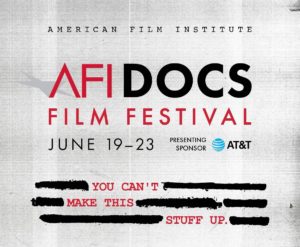
The AFI DOCS documentary film festival (formerly AFI SILVERDOCS) rolls along with this, its 17th yearly edition. However, there are definite signs that a significant downsizing, or even demise, could be the ultimate fate of this very important festival. The most notable indicator is yet another notable yearly drop in the number of films being offered. The last three fests have seen the total films offered fall from 112 in 2017, to 92 last year to 72 this year. And one has to wonder about its overall financial stability when they could not even afford (as told to me by an unnamed festival official) a portable spotlight to properly light Q&A’s in the dimly lit Landmark Theater venues.
The good news is the festival is still being presented over the course of five days and maintains a solid Presenting Sponsor in AT&T while continuing to offer a variety of Impact Labs (which, “helps artists generate broad social impact and political change through the power of story and film”) and Forums (which, “presents a variety of networking and professional development events for filmmakers, industry professionals and those with a passion for nonfiction storytelling”).
Gala presentations included the opening night documentary “True Justice: Bryan Stevenson’s Fight For Equality”, the closing night film “Raise Hell: The Life & Times of Molly Ivins”, and “American Factory” which won the Sundance U.S. Documentary Directing Award. Two special programs offered discussions entitled “In The Line Of Duty: A Conversation with Ernie and Joe and Rep. Bruce Franks, Jr. (St. Louis Superman)” and “Protecting Journalists and Safeguarding Press Freedoms: A New Initiative” which followed screenings of “Ernie And Joe” and “The Assassination of Jamal Khashoggi”, respectively.
Also, special screenings included the World Premiere of the six-hour American Experience miniseries “Chasing The Moon” (which won The Audience Feature Award – see below), National Geographic’s “Sea of Shadows”, as well as “Toni Morrison: The Pieces I Am”. And for the first time, the majority of feature films were organized into specific categories: Portrait, Truth & Justice, Spectrum (explained as “a wide selection of some of the most exciting nonfiction work of the year” where “these filmmakers are pushing the boundaries of storytelling and exploring more unconventional subject matter”), Anthem (“a cinematic celebration of music in all its forms”) and Cinema’s Legacy where three groundbreaking documentaries from the past, “of such originality and brilliance that they redefined the documentary art form”.
This year’s Guggenheim Symposium honoree was filmmaker Freida Lee Mock whose numerous nominations over the year’s included winning a Best Documentary Feature Academy Award for her 1994 film “Maya Lin: A Strong Clear Vision” and a prime-time Emmy Award. Following a discussion with Washington Post critic Ann Hornaday was an advance screening of her latest work “Ruth – Justice Ginsburg In Her Own Words”.
Once again, festival locations occurred in both Silver Spring at the AFI Silver Theater (the birthplace of the festival) and various venues in the downtown D.C. Penn Quarter section with most films playing at The Landmark theater. New venues here included a switch of the Opening Night film (“True Justice: Bryan Stevenson’s Fight for Equality”) from the Newseum to the significantly smaller National Archives Museum, single showings at The Warner Theater and National Geographic Museum as well as three films playing at the Navy Memorial.
Overall, the AFI DOCS Film Festival, despite its minor shortcomings, continues to provide the public and filmmakers, from over 2000 entries, a top notch conglomeration of quality documentaries from 17 countries around the world and a meaningful topical platform that entertains, informs and educates. Nonfiction documentaries continues to be relevant and along with conversations here with some of this nation’s leading media journalists help to further emphasize the value of this festival which cannot be overstated in this increasingly complicated world.
NOTE: The Audience Award for Best Feature went to The American Experience series “Chasing the Moon” directed by Robert Stone about American’s race to the moon and honors the 50th anniversary of the moon landing. The Audience Award for Best Short went to “St. Louis Superman” directed by Smriti Mundra and Sami Khan about 33-year-old rapper Bruce Franks, Jr. who became an influential St. Louis activist and representative. A Short Film Grand Jury prize went to “In The Absence” directed by Yi Seung-Jun about the 2014 South Korean ferry disaster which claimed over 300 children and the efforts by victims’ families and survivors to seek justice. Honorable Mention Short Awards went to “A Love Song For Latasha” (directed by Sophia Nahli Allison) and “Scenes From A Dry City” (directed by Francois Verster and Simon Wood). (None of these films were screened by this reviewer.)
MY TOP 5 AT THE 2019 AFI DOCS*
(1) Maiden (4 out of 4 stars – 93 Minutes)
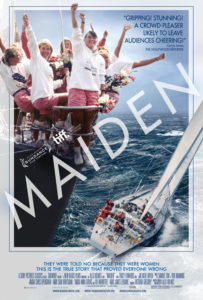
One of the more inspirational stories is director Alex Holmes’ profile of British sailor Tracy Edwards and her phenomenal achievement after gathering an all-female crew in 1989 at the age of 24 to participate in the male dominated 33,000 mile, 9-month Whitbread Round the World Race. It begins with a detailed biography of Edward’s early life which went from relatively normal up until the death of her father at age 10 to her dealing with an abusive stepfather that led to her leaving home at the age of 16 to explore the world. This is where, literally and figuratively, the heart of the film begins.
Her initial restlessness took her to Greece where her passion for sailing began with odd jobs on charters. She would end up in the 1985 version of the race after begging to work below deck as a cook. Yearning to work above deck, she had, what was considered crazy at the time, the audacious idea to place a yacht in the 1989 with a 12 all-woman crew. Tracy was immediately faced with the first of many obstacles: in order for her dream to materialize she required significant funding to obtain a racing yacht. Unable to obtain sponsorship for her novel idea, that was universally perceived likely to fail, she obtained the necessary financial support from King Hussein of Jordan whom she had met during a stopover in the U.S. Now able to purchase and refurbish a 10-year old second-hand 58-foot boat that she renamed “Maiden”, she set her sights on the grueling race which comprised six legs over nine months.
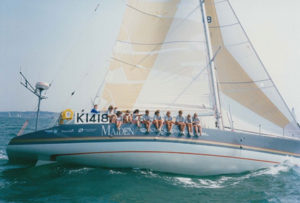
As the race unfolds, viewers will experience equal parts excitement, exhilaration and amazement while witnessing the fantastic footage (taken by her cook and designated videographer, Jo Gooding) all of which concludes in an unpredictable and emotional manner. The director emphasizes the visuals by incorporating Edwards as the principle narrator along with interviews of some of the participants. Thirty years before the recent outstanding team performance by the U.S. soccer team in this year’s World Cup came this sensational achievement by a group of woman attempting to coexist in a totally chauvinistic environment facing constant hostility and contempt from the media and competitors for what they were attempting to accomplish. A total crowd-pleaser! “Maiden”, which won the Audience Award at The Dublin International Film Festival and the Audience International Feature Award at The Northwest Fest, opened nationally on a limited basis on June 28.
(2) Cold Case Hammarskjöld (4 out of 4 stars – 128 Minutes)

For me, a top-notch documentary should inform, entertain, and have me reflecting on the film long after the lights come up. Danish director Mads Brügger had me checking all these boxes in spades with his latest, exploring the 1961 untimely death of the late UN Secretary-General Dag Hammarskjöld who was killed in a plane crash in Africa. I screened Brügger’s 2012 The Ambassador at this festival seven years ago in which he tackled the rampant political corruption in the ultra-dangerous Central African Republic. Chock full of humor and irony, Mads dangerously puts himself in the middle of his investigation going undercover with hidden cameras to expose the corruption first-hand (the film placed 6th in my top 10 at the 2012 AFI Silverdocs fest). This time around, Brügger, using the same ironic humor, takes great pain to explore what seems on the surface a potentially outrageous conspiracy theory that the crash was actually an assassination.
The film begins with the director dressed in an all-white safari outfit dictating his thoughts to an African stenographer (who uses an old typewriter no less) – explaining that the actual villain (to be revealed much later in the story) was known to appear only in such garb. Brügger explains that he mimics the dress choice, in the same hotel used by the protagonist, to put him in the proper frame of mind to tell/dictate his narrative. There are multiple twists and turns and just when the viewer thinks the story is going in one direction, Mads pulls that rug out from under you and takes you down another sordid path that includes genocide, mercenaries, secret militias, death cults, as well as incredible theories such as the possibility of a “doctor” who was deliberately injecting patients with AIDS while profiting from cheap vaccines.

Björkdahl searching for remnant’s of Dag Hammarskjöld’s plane ©Magnolia Pictures
The director bombards us with visuals: from black-and-white animation in order to illustrate his six-year-long quest to uncover the truth, to his and his Swedish aid worker’s attempt to unearth the actual site of the plane crash with a metal detector and woefully inadequate shovels. The humor will have you pondering the seriousness of it all, but then Brügger uncovers something that will negate your interpretations and conclusions. At no point does his journey to uncover the truth leave you bored or uninterested or have you looking at your watch counting down the minutes. When he reveals that the late Secretary-General was the only one found intact and was discovered with an ace-of-spades playing card wedged into his collar – Brügger grabs our psyche and doesn’t let go until the last of the 128 minute running time. The director prepares the audience at the start proclaiming that we are about to see either “the world’s biggest murder-mystery, or the world’s most idiotic murder-mystery.” I’m still not certain which is the correct answer but I am delighted that I took the fascinating journey. Cold Case Hammarskjöld, winner of this year’s Sundance World Cinema Documentary Directing Award, is scheduled for a limited U.S. theatrical release on August 16.
(3) Who Killed Garrett Phillips? (4 out of 4 stars – 186 Minutes)

Academy Award Best Documentary nominee Liz Garbus (1998’s The Farm: Angola, USA and 2015’s What Happened, Miss Simone) directs this riveting two-part HBO mini-series investigating the 2011 murder of 12-year-old Garrett Phillips which occurred in mostly white Potsdam, a small town in upstate New York. Garbus never definitely answers the question in the title. As it turns out, it doesn’t matter as she is more interested in the journey involving the suspect who is the focus of the investigation. With surgical precision, the director presents a compelling peak into our justice system that is both scary and relevant in today’s racially charged climate.

Garrett lived with his single mom, Tandy Cyrus, in an apartment building and when neighbors heard disturbing noises and a voice saying, “no”, police were called. After they eventually entered the apartment they found the boy dead of strangulation. The local cops quickly focused on Garrett’s mom’s ex-boyfriend, Oral “Nick” Hillary, a Jamaican-American black local soccer hero at St. Lawrence University where he was now a coach. It is revealed that Nick and Tandy eventually broke up mainly due to Garrett never being accepting of Nick in his mom’s relationship. Was this a sufficient motive where a love struck lover inflicts revenge? One of the film’s highlights is how Garbus meticulously presents the details of Hillary’s initial interrogation, which depicts the cops as bungling, incompetent, and biased. Nick, on the other hand, uses his intelligence as well as his awareness of the judicial system and his own innocence to thwart all their attempts to gain a confession.
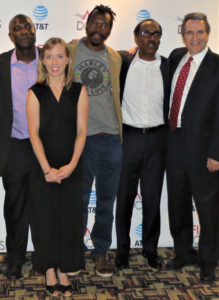
Then there is John Jones, Tandy’s previous white boyfriend prior to Nick, who just happens to be a Potsdam cop and whose fellow comrades are the interrogators. Is he a driving force behind the scenes to convict Nick? Could Jones even be considered a suspect in the murder?? Again, these questions are not explored by the filmmaker, who instead recounts Hillary’s incredible 5-year journey to rectify his name and reputation. The real joy here is not in answering the title’s question, but reveling in the process by which an innocent man tries to retain his freedom and dignity. Liz Garbus won two Primetime Emmys for Ghosts of Abu Ghraib (2007) and What Happened, Miss Simone and is sure to be a solid contender with this outstanding documentary. The film had its World Premiere at this festival and premiered on HBO on July 23.
(4) Sea of Shadows (3½ out of 4 stars – 105 Minutes)
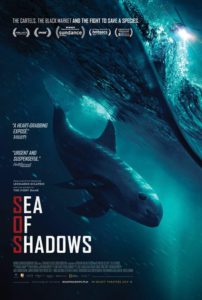
In recent years there have been several terrific docs focusing on the abuse and/or endangerment of various aquatic animals. The 2009 Academy Award winner The Cove about dolphin slaughtering in Japan and the 2013’s Blackfish about the abuse of killer whales at sea parks are just a couple of examples. Besides bringing awareness to the atrocities it is equally important to bring their messages to as many folks as possible in order to have maximum impact. Therefore, in this vein, it is imperative that the filmmaker takes the time and effort to create a quality film that only helps in obtaining a more widespread distribution.
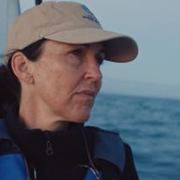
and Director of Medicine for the National Marine Mammal Foundation
in her quest to save the vaquitas ©National Geographic
Director Richard Ladkani has done just that for the National Geographic Channel and produced this disturbing account of the possible extinction of the endangered vaquita, a species of porpoise, and considered the world’s smallest whale, endemic to the northern part of the Gulf of California that now number less than two dozen. There is currently an illicit trade for the swim bladder of the totoaba fish in China (it has been referred to as “the cocaine of the sea” due to its value as a delicacy in Chinese cuisine and its alleged holistic powers) and catching these fish has resulted in vaquita getting ensnared in the nets earmarked for the totoaba. Ladkani effectively weaves two narrative threads: the insidious cartel that treats the swim bladders like any other typically violent drug traffickers, and the concerted efforts by conservationists to combat their efforts as they attempt to roundup the remaining vaquita to hold in captivity until it is safe to return them to their habitat.
The result is a film unlike the usual fare on National Geographic in that it plays like a Hollywood thriller complete with guns, criminality, vicious syndicates, and the Chinese Mafia; all surrounding a desperate attempt to save a species on the verge of extinction. Winner of the Audience Award for World Documentary at this year’s Sundance, Sea Of Shadows had a limited theatrical release on July 12 and will appear on the National Geographic channel sometime in 2020.
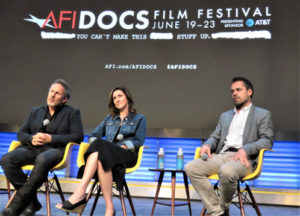
(5) Ernie & Joe (3½ out of 4 – 97 Minutes)
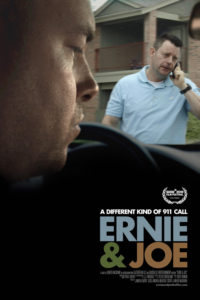
Buddy movies. We’ve all seen them. However, it is a rare genre for documentary films. So, it was a welcome surprise to not only screen a nonfiction bud film, but one that was also so exceptional and inspiring. Director Jenifer McShane for two years followed a couple of officers from the San Antonio’s Police Department’s 10-person Mental Health Unit (MHU), Ernie Stevens and Joe Smarro. With today’s headlines screaming with instances of crimes involving disturbed individuals and with several major U.S. cities at a breaking point dealing with homelessness and the mentally ill, these two officers have utilized unique methods for confronting these folks head-on.
Their “hug-a-thug” approach is appearing less threatening by wearing lay clothes, being unarmed, and being prepared to better connect and gain trust by slowly conversing and listening with their subjects who could be suffering with such maladies as extreme depression, bipolar disorder, schizophrenia, and PTSD. They are treated more like patients instead of criminals. Making follow-up visits to check on their progress is often part of the everyday agenda of these two officers, imparting a personal touch that connects strongly with those who are troubled. The importance of all this cannot be overstated as one in five Americans have been diagnosed with a mental illness. This has not been lost on the SAPD as they have upped the mental health communication training for their officers from 8 to 40 hours (gun training is 60 hours!).

McShane’s effective vérité style includes several encounters the two have experienced to illustrate the successful techniques the MHU officers employed. In order to personalize Ernie and Joe, focus is also placed on their private lives and depicts how each is struggling and juggling their separate life issues with an extremely stressful demanding job. The contrast between the two is striking: Joe, who started the MHU, is a devoted church-going family man in a stable relationship while Ernie is an ex-Marine who did tours in Iraq and Afghanistan and who is dealing with his combat PTSD and history of child abuse while going through a divorce. He clearly recognizes the challenges of those unbalanced folks they encounter daily in San Antonio. The support each officer brings to each other is reflected in their humanitarian efforts to save others, which is reflected in one report that states they have save 100,000 people from jail or ERs.
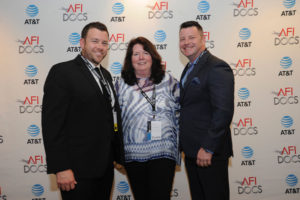
The film does show their chemistry and includes its share of humor as is no doubt a release of the tension they face on a daily basis and helps to balance the anxiety they constantly encounter. McShane includes a segment where Joe prepares and lectures at a TEDx talk, spreading their techniques to other departments around the country in the hope that words, actions, and empathy are initially used to defuse a confrontation instead of firearms. We can only hope. Ernie & Joe, which won the Special Jury Recognition at this year’s SXSW Film Festival and the Grand Jury Prize for Documentary Feature at the Independent Film Festival Boston, was bought by HBO and is scheduled to appear on that channel later this year.
HONORABLE MENTIONS
Aquarela (3½ out of 4 stars – 90 Minutes)
Stunningly beautiful visual and aural commentary on the raw power of water and its affect on mankind around the globe. Director Victor Kossadovsky takes us to various striking locales and events such as Russia’s frozen Lake Baikal, Miami during Hurricane Irma, and Venezuela’s Angel Falls. Filmed at a rare 96 frames-per-second (movies are typically 24 frames-per-second), this doc is a must-see on the big screen with an equally big sound system. Aquarela is scheduled for a limited US theatrical release on August 16.
Recorder: The Marion Stokes Project (3½ out of 4 stars – 87 Minutes)
Beginning in 1979, Philadelphia native Marion Stokes became fascinated with the Iranian Hostage Crisis and began recording history 24/7 on multiple video cassette recorders. She eventually amassed over 70,000 VHS cassettes on multiple recorders covering the news cycle for over 30 years until her demise on December 14, 2012 during the Sandy Hook school massacre. Her project is a time capsule of mankind over these years that has since been preserved by The Internet Archive in San Francisco converting these tapes to digital files. However, what makes Matt Wolf’s film equally fascinating is the life profile of this reclusive Communist-leaning media activist who, in the final analysis, became a visionary as a result of her OCD-like obsession.
The Amazing Johnathan Documentary (3½ out of 4 stars – 91 Minutes)
Documentary filmmakers often will say that their movies will start off in a particular direction and end-up becoming entirely different. Director Ben Berman, a TV comedy vet, experienced just that when he set-out to make his first documentary. He chose as his subject a supposedly dying Las Vegas comedian/illusionist/magician, John Szeles, aka the Amazing Johnathan, who retired in 2014 when he was told he had one year to live due to a heart condition. When Berman begins filming in 2017 he encounters several surprising developments: Szeles is still alive, he has a meth habit that might be the cause of his health issues instead of a heart ailment, and, when Szeles announces he is planning a comback, he finds himself unexpectedly competing with a different film crew who is also filming his subject. Eventually, Berman has second thoughts about the whole project and considers ditching the whole thing. However, instead, the director turns the camera on himself and faces the conundrums head-on in order to to complete his project. The crazy rabbit holes he goes down emphasizes the utter unpredictability and challenges of making a non-fiction film.
*For additional Film Festival Today coverage read my colleague Christopher Llewellyn Reed’s own excellent report on AFI Docs 2019.
Jay Berg lives in Towson, MD. His blog “Jay Berg’s Cinema Diary” can be read at http://jayberg.blogspot.com/. He can be contacted at jaybergscinemadiary@gmail.com

